In this way, RE2020 is going way beyond its predecessor (RT2012) and is forcing the construction industry to reduce its carbon footprint. The law is making France a forerunner in decarbonising buildings. The sector accounts for 44% of France’s energy consumption and nearly 25% of the country’s climate-damaging CO2 emissions.*
The law, which took effect on Jan 1st, 2022, becomes increasingly stringent in 2025, 2028 and 2031 to ensure emissions go down.
“…RE2020 will accelerate the pace of low-carbon construction,” says Julien Pemezec, Chairman of real-estate developer Woodeum. “This is very good news, because France will be one of the first countries in the world to measure the carbon impact of … buildings. This is a real industrial revolution for the construction sector.”
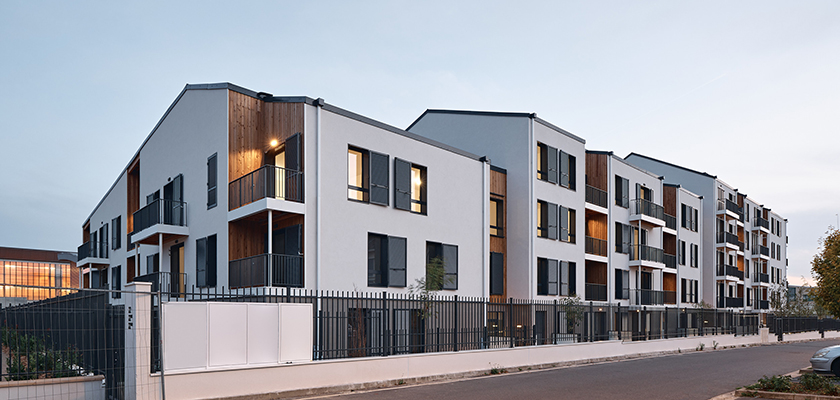
MELIA BUILDING (TAVERNY, France) – Stora Enso Partner: Woodeum. Woodeum’s MELIA in a northwestern suburb of Paris has already achieved the 2031 carbon criteria for RE2020, with 498kg CO₂ emitted / usable m². Photo: Epaillard/Machado
RE2020 applies today to any new offices, residential buildings, and primary and secondary education facilities. Before the end of 2023, the laws will also apply to specific tertiary buildings including hotels, restaurants, retail, and gyms.
Several countries have laws in place to limit carbon emissions on buildings (Denmark, Finland and the Netherlands), but there is no EU law as strong as RE2020. Many parliaments are closely watching France, and assessments of the initial outcomes will likely determine if more countries follow France and adopt similar building legislation.
How to comply with RE2020
So, what does this mean for those working in the industry in practical terms? To comply with RE2020, developers must start measuring in areas they haven’t measured before.
It’s broken down broadly into three areas:
- energy
- comfort
- carbon
‘Energy’ relates mainly to the energy consumption required while the building is in operation. This is like the regulations before RE2020, it’s now based on CO2 emissions rather than kilowatt hours. This is referred to as ‘energy carbon impact’ in RE2020.
‘Comfort’ refers to the amount of discomfort permitted in hot weather. The regulations limit the maximum indoor temperature a building can reach during five consecutive hot summer days. The RE2020 summer comfort standard will remain the same up to 2031.
‘Carbon’ measurements are where things really change. It is now required to measure the climate-change impact of the construction itself, including the building materials and the construction process. This is known as the construction carbon impact, (IC construction).
By 2025, the IC will have to go down significantly again in 2028, and even more in 2031.
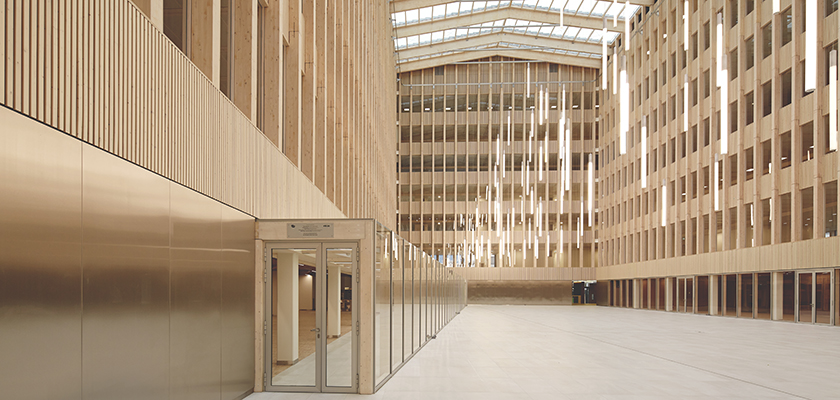
Pulse, Saint-Denis, France, Paris Olympic Games HQ
Developer: ICADE Architect: BFV Architectes Photo: Frédéric Delangle
Material world
To get an accurate measurement, a life cycle analysis (LCA) is required to measure the environmental impact of a building from the moment the raw materials are procured to building material production, right through the building’s operations and even into their waste or re-use when the building is no longer operational. An initial LCA needs to be produced when a developer applies for a construction permit and then detailed information is required when the design is finalized.
What’s particularly interesting about RE2020 is that it requires the LCA to include the timing of building-related emissions. With this so-called dynamic LCA approach, emissions generated earlier in the project are restricted more than future emissions, and the benefit of carbon-storing materials are recognised. These considerations make the choice of materials crucial and sustainable wood increasingly more relevant.

Comparison of dynamic LCA analysis between Glulam and Steel Beam - Source : CEREMA
Cerema is the French public agency for developing public expertise in the fields of urban planning, regional cohesion and ecological and energy transition. They have looked at the differences between a steel beam and the equivalent in glued-laminated timber(glulam). Based on a dynamic lifecycle analysis as is required by RE2020, the glulam beam actually achieves a performance of minus 14,6kg CO2e, thus absorbs CO2. The steel equivalent comes out at plus 79,8kg CO2e.
Are bio-based materials the answer?
The transition to wood is new for many, which is why the RE2020 laws are not too challenging to start with, as it gives the industry a chance to transform ways of working and developing skill sets. But bio-based materials are going to be required by 2025, and mass-timber products are already an attractive option to meet future objectives.
“Wood is the only structural material that meets the needs of the construction industry. It has low emissions during production and stores carbon throughout its life. It is currently essential for meeting the highest criteria (2031) of the RE2020,” says Bastien Bouteloup, Director of R&D and Engineering at developer, Woodeum.
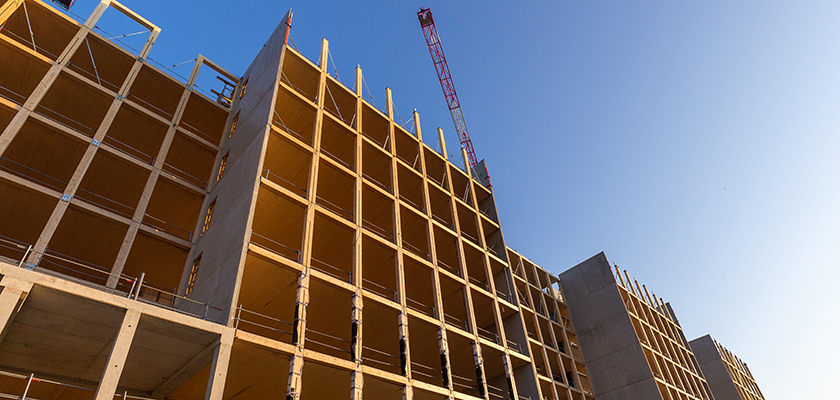
Arboretum, Nanterre, France. Stora Enso Parner: WO2 – Architects: Leclercq Associés, Nicolas Laisné, Dimitri Roussel - Photo: P.Raffin
“RE 2020 requires us to be low-carbon, based on three pillars: low-energy design, use of low-emission materials, and reuse,” says Laurent Petit, Director of Engineering at real-estate developer WO2. “Every designer must draw up carbon accounts and make savings wherever possible. This leads to a change in construction methods. For structural work, which accounts for a third of emissions, the use of bio-sourced materials, partially replacing traditional materials, which are highly emissive, is part of the answer. However, this alone will not enable us to meet the emissions ceilings set for 2031. Other efforts will have to be made, mainly regarding finishing materials and technical packages, where reuse will become essential.”
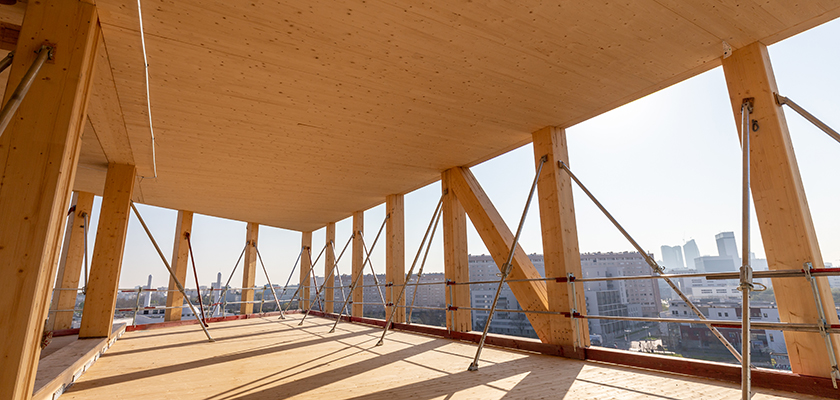
Arboretum, Nanterre, France Stora Enso partner: WO2 – Architects: Leclercq Associes, Nicolas Laisné Architectes, Dimitri Roussel (DREAM) Photo: ©Patrick Raffin / Mathis Construction Bois
How to transition to building wood-based structures
For an industry traditionally slow to make changes, the RE2020 standards are set to transform the entire French building industry. France may soon haven become the world’s most low-carbon building sector construction industry. But where do you get started in making the transition?
Developers are recommend seeking expert advice when it comes to making use of wood as different mass-engineered wooden elements have different qualities. As Mathieu Robert, Head of Stora Enso Building Solutions, reminds us, “It’s important that the right material is used in the right place and even if wood is used, it needs to be used in the best possible way. For example, some engineered wood, like laminated veneer lumber (LVL) is extremely material-efficient and can work well with long spans. Whereas cross-laminated timber (CLT) is excellent for load-bearing walls and even flooring. Since CLT can be quite thin, it can mean minimal floor to ceiling height for a developer looking to build a multi-storey building. Understanding how to make the best use of the resources will also be critical by the time 2031 comes around.”
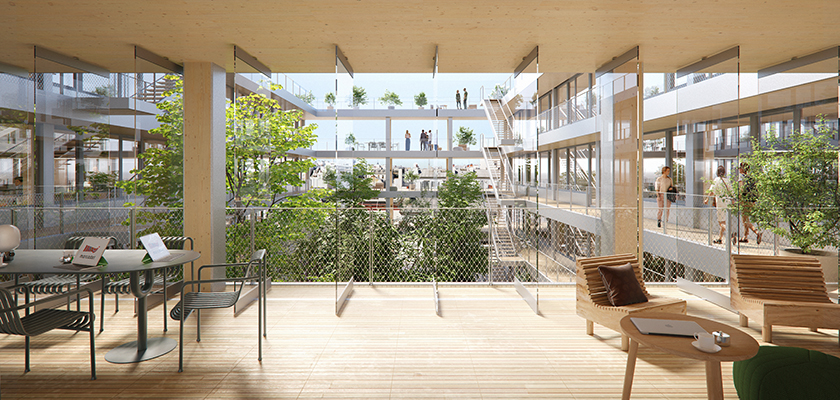
Marcadet Belvédère Renovation, Paris - Stora Enso Partner: WO2 – Architect: Chartier Dalix – Image: L’autre Image
* Ministère de la Transition écologique et solidaire, 2021a
** CODIFAB, The Professional Committee for the Development of the French Furniture and Wood Industries
For more information: Comparison of IC construction performance between various structure options
An analysis by POUGET CONSULTANTS
 Base case model is a building of 35 dwellings in ITI (internal thermal insulation) concrete under plaster, with individual gas (a heat pump variant would increase the Construction Ic by 20-25).
Base case model is a building of 35 dwellings in ITI (internal thermal insulation) concrete under plaster, with individual gas (a heat pump variant would increase the Construction Ic by 20-25).
The optimised finishing variant is:
- Solid parquet (dry room)
- Recycled carpet (common area)
- Recycled paint
- Door with wooden frame
- External wood joinery (without metal cladding)
- Wooden shutters
- Biosourced interior insulation
The CLT variant is an external finish with external thermal isolation (ITE) under plaster (carbon cladding would be close to the 2028 threshold). And we use CLT for the facade, floor and partition walls (only the staircase and lift are in concrete).




